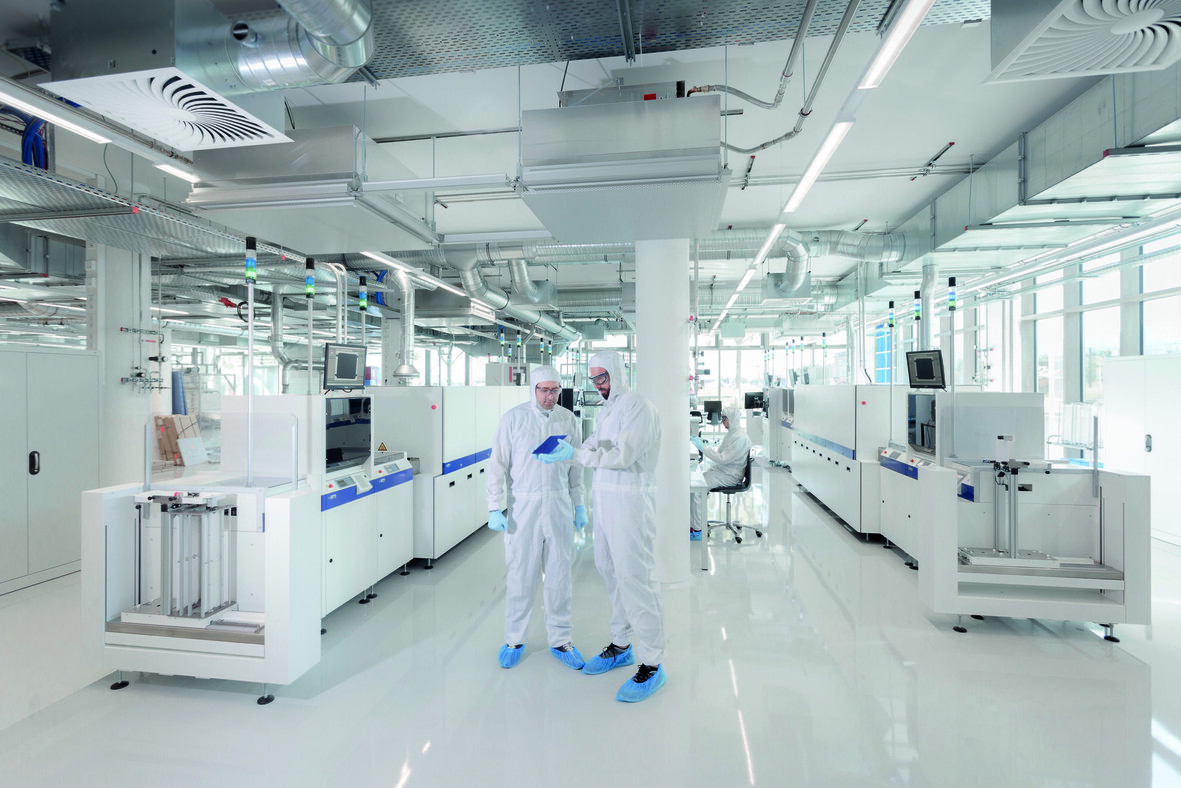From pv magazine Global
Researchers from Germany’s Fraunhofer Institute for Solar Energy Systems (ISE) have developed a technique known as “FlexTrail printing” – a metallization method to print silver-nanoparticle-based front electrodes on busbarless silicon heterojunction (SHJ) solar cells.
“Currently, we are working on a FlexTrail parallel print head allowing for fast, reliable, and precise processing of high-efficiency solar cells,” researcher Jörg Schube told pv magazine. “Because of the very low fluid consumption, we expect positive impacts on costs and ecological footprint for PV solutions.”
FlexTrail-printing can enable the precise application of media of different viscosities with an extremely precise, minimal structure width.
“It is demonstrated that it enables both an effective silver usage, contact uniformity, and low silver consumption,” the scientists said. “Due to its simplicity and process stability, it additionally has the potential for low cycle times per cell and is, thus, predestinated for a future lab-to-fab transfer.”
The technique involves the application of a very thin, flexible glass capillary filled with fluid at an atmospheric pressure of up to 11 bar. During the printing process, the capillary is in contact with the substrate and continuously trails over it.
“The glass capillary’s flexibility and bending allows for a non-destructive processing,” the academics said, noting that the method also enables the printing of curved structures. “Additionally, it balances possible substrate waviness.”
The research team fabricated one-cell modules using SmartWire Connection Technology (SWCT), which is a multi-wire interconnection technology based on copper wires covered with a low-temperature solder alloy.
“Typically, the wires are integrated into a polymer foil and attached to the solar cell by an automated stringing. The solder interconnection is formed during a subsequent lamination process conducted at a silicon heterojunction-compatible process temperature,” the researchers said.
They printed the fingers consecutively using one capillary, which resulted in silver-based functional lines with a feature size of 9 μm. They then built 22.8%-efficient SHJ solar cells on M2 wafers and with those cells they fabricated a 200 mm x 200 mm one-cell module.
The panel achieved a power conversion efficiency of 19.67%, an open-circuit voltage of 731.5 mV, a short-circuit current of 8.83 A, and a fill factor of 74.4%. For comparison, a reference module fabricated via screen printing achieved an efficiency of 20.78%, an open-circuit voltage of 733.5 mV, a short-circuit current of 8.91 A, and a fill factor of 77.7%.
“FlexTrail has an advantage over inkjet in terms of conversion efficiency. Moreover, it has an advantage in simpler and, therefore, more cost-effective processing, since only one pass per finger is necessary for printing and, in addition, silver consumption is lower,” the researchers said, adding that silver reduction was estimated at around 68%.
They presented their findings in “FlexTrail Printing as Direct Metallization with Low Silver Consumption for Silicon Heterojunction Solar Cells: Evaluation of Solar Cell and Module Performance,” which was recently published in Energy Technology.
“To pave the way for an industrial application of FlexTrail printing, a parallel printhead is currently under development,” the scientists concluded. “For the near future, it is planned to utilize it not only for the metallization of SHJ but also for tandem solar cells, for example, perovskite silicon tandems.”
This content is protected by copyright and may not be reused. If you want to cooperate with us and would like to reuse some of our content, please contact: editors@pv-magazine.com.









By submitting this form you agree to pv magazine using your data for the purposes of publishing your comment.
Your personal data will only be disclosed or otherwise transmitted to third parties for the purposes of spam filtering or if this is necessary for technical maintenance of the website. Any other transfer to third parties will not take place unless this is justified on the basis of applicable data protection regulations or if pv magazine is legally obliged to do so.
You may revoke this consent at any time with effect for the future, in which case your personal data will be deleted immediately. Otherwise, your data will be deleted if pv magazine has processed your request or the purpose of data storage is fulfilled.
Further information on data privacy can be found in our Data Protection Policy.